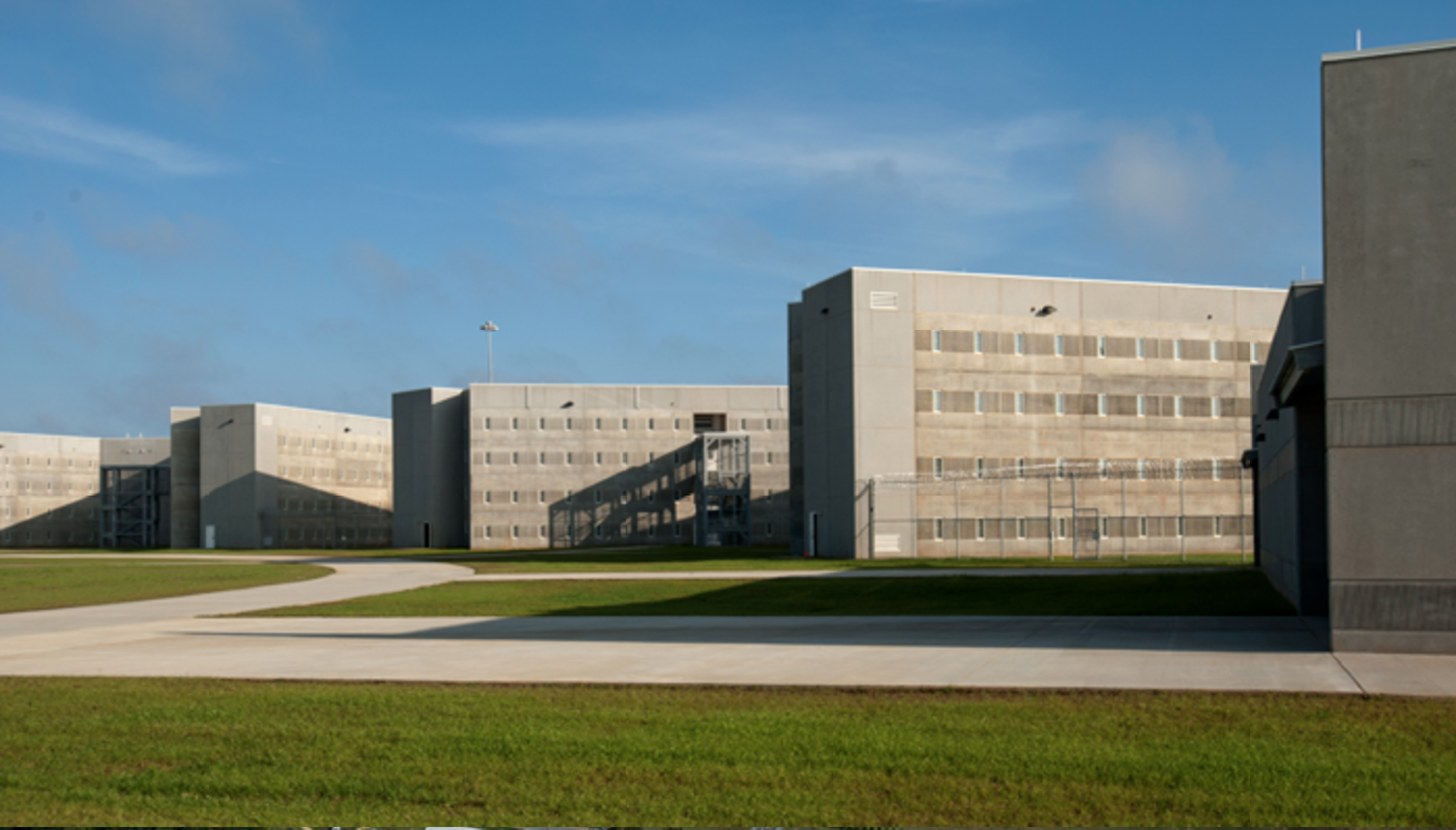By Chip Brownlee
Alabama Political Reporter
MONTGOMERY — Gov. Robert Bentley’s $800 million prison construction initiative has raised some eyebrows among lawmakers at the Alabama State House, prompting the proponent of the Governor’s plan to consider a smaller alternative.
Sen. Cam Ward, chairman of the Senate Judiciary Committee and sponsor of the bill authorizing the Alabama Prison Transformation Initiative in the Senate, said Thursday that he would consider an alternative: perhaps a $500 million plan instead of the original $800 million plan.
“It’s possible,” Ward told APR. “We’re negotiating that now.”
The Judiciary Committee will meet next week, Ward said, at which time a substitute bill will be voted on. The bill would be a compromise “almost everyone can agree on,” Ward said.
“We’re going to meet with all of the parties, those who are for it and those who are against it, and let them have their say,” Ward said. “That’s why we took another week on it.”
The Committee addressed the current version of the bill Wednesday during a public hearing but there was no vote. The hearing saw presentations from Jeff Dunn, Alabama Department of Corrections commissioner, and several others including many who were against the plan.
Detractors, which included Committee members and representatives from various legal organizations, questioned the plan’s bidding process and whether it would actually solve the problems — overcrowding, understaffing, violence and mental health care — facing the State’s prisons.
Ward said they made some good points, which is why he is considering a compromise plan.
Where are the prisons going?
Bullock County Commissioner Ron Smith raised a concern common among many legislators whose districts include State facilities: Where will the new prisons go and what prisons will be closed? The plan calls for 14 of Alabama’s 17 prisons to be closed and consolidated into three new men’s prisons. One prison would be for women.
“Bullock County Correctional is our Hyundai,” Smith said. “Keep our Hyundai in Bullock County. Please put us at the top of the list. If not, leave us how we are.”
Another local official, Clio, Alabama, Mayor Jack Pelfrey, told those at the committee meeting Wednesday that his town had large debts from financing water and sewer projects to a State prison there.
“We are in debt until 2043,” Pelfrey said. “The prison is by far our largest customer.”
Ward said he was sympathetic to those concerns.
ADOC will fulfill contracts like infrastructure agreements with the counties that currently have prisons and there are plans to work with existing correctional officers to relocate them to the new prisons in their region.
But prisons shouldn’t be used as economic development projects, he said.
“The criminal justice system needs to work based upon what works for corrections, rehabilitation and public safety,” Ward said. “George Wallace used prisons as a tool to get votes and spur economic development. But I understand those communities’ concerns, and I’m with them.”
Overcrowding, understaffing and possible savings
The plan would authorize the Department of Corrections to issue an $800 million bond to construct three new 4,000-bed men’s prisons and a new women’s prison. It’s the brainchild of ADOC Commissioner Jeff Dunn and is Bentley’s top priority during this legislative session.
The Governor’s plan is an attempt to address overcrowding and systemic understaffing problems, but it doesn’t completely alleviate them. The plan would only reduce overcrowding from about 200 percent capacity to about 125 percent capacity over the next five years.
Alabama’s prisons currently house about 23,000 inmates in a system built mostly in the 1970s for a max of 13,000 inmates, according to the most recent ADOC statistical reports. Bentley’s plan would only increase capacity to 16,000 inmates if the planned number of existing prisons are closed.
The population has decreased from about 27,000 after the Legislature passed sentencing reform measures in 2013. Ward has said he favors an “all of the above” approach, which could include more sentencing reform.
The federal judiciary has shown increasing impatience with Alabama’s prison system. In 2014, conditions at Alabama’s Julia Tutwiler Prison were so bad that a Federal court ruled them unconstitutional and ordered improvements.
And another class-action lawsuit filed by the Southern Poverty Law Center over mental health conditions at Alabama’s prisons went to trial in December.
The SPLC, a Montgomery-based civil rights legal organization, doesn’t believe Bentley’s plan solves the State’s underlying problems of understaffing and inadequate health care. The SPLC is currently litigating the lawsuit alleging that the State is deliberately indifferent to prisoners’ mental health needs.
“There is no question that Alabama needs to improve its prison facilities,” said Ebony Howard, SPLC associate legal director. “But spending $800 million on four new prisons will not fix the grossly inadequate medical and mental health care, the ongoing staff shortage or the unspeakable levels of violence.”
The bond would end up costing the State about $1.5 billion over the 30-year repayment period. The Department of Corrections says operational savings from the new prisons would save the State about $50 million a year — enough to finance the bond’s annual payment, according to independent reports ADOC commissioned.
Consolidation using the four “mega prisons” would reduce staffing costs by about $17 million a year, overtime payments by $21 million a year and healthcare delivery by $10 million, according to the two independent studies.
The plan calls for no reduction in health care staff but consolidates the healthcare administration from 14 different facilities to only three regional men’s facilities, which should increase access to healthcare while reducing costs, proponents say.
The consolidation would also allow for a 6 percent reduction in security staff and a 19 percent reduction in support staff, ADOC said.
Savings from the new prisons’ overall lower operating costs will allow ADOC to support the billion-dollar bond issue through its current annual appropriation. They say no changes to their General Fund appropriation will be needed.
Savings total $50 million a year, which, if accurate, would match nicely with estimated annual bond payments of about $50 million.
Ward told APR that he has asked the Legislative Fiscal Office for an additional report on estimated savings. He said he would have the full report by next week’s committee hearing and the findings will be presented.
To bid or not to bid?
The plan calls for the use of a design-build construction method. With this plan, one entity would be chosen to both design the facilities and construct them.
In the normal bidding process, the design-bid-build method, one entity bids for the design contract, another bid for the construction contract and the contractors then subcontract to smaller components of the construction.
Several legislators and many in the media were concerned that the plan would be less transparent and perhaps even be a no-bid process. But the design-build plan would save the State money and yield better results all while maintaining an open bid process, Ward said.
“The reason we want to do it this — and why most states other than us do it this way — is because you have one bid, as opposed to two people running down different tracks who sometimes don’t communicate, which causes cost overruns,” Ward said. “You’re still bidding it, but you’re just not bidding every single piece of it. It saves money this way.”
The nontraditional bidding process has thrown some people off, but 49 other states and the District of Columbia have used it before, Ward said, and have had successful results.
Continue reading below…

A Montgomery-based contractor, Caddell Construction, built a design-build prison near Aliceville, Alabama, in 2009.
It’s been used successfully in Alabama, as well, just not by the State government. A federal women’s prison near Aliceville, Alabama, in south Pickens County, was built in 2009 using a design-build method.
The federal correctional facility was built by Montgomery-based contractor Caddell Construction for a cost of $192 million, according to Caddell. It houses more than 1,600 inmates, an eighth of all women in federal prisons.
Is there a watchdog?
Under existing State statutes, the votings members of the State authority responsible for overseeing the issuance of the bond and construction of the prisons consists of the Governor, the Commissioner of the Department of Corrections and the Director of Finance — all within the Governor’s cabinet.

Gov. Robert Bentley
The prison construction bill in the Senate would add a House and a Senate member to the board. But that may not be enough to stop the executive branch from jostling a plan through authority, which has a quorum of three members.
“The Legislature cannot have a majority on the authority because that gets into the separation of powers. They can’t approve the money and then spend the money,” Ward said. “We can add other members to the authority, though. We can the Treasurer and maybe some other executive branch members, but we can’t have a majority of the Legislature on there.”
The three members of the authority, under current statutes, have the power to acquire land, construct and lease the facilities and issue bonds up to $60 million. The bill would give the new five-member authority the ability to issue up to $800 million in bonds for new prisons.
No construction budgets have been submitted to the Legislature yet. They are simply voting on a broad outline of the plan. ADOC and the Alabama Corrections Institution Finance Authority will have the final say on the plan, under current statute and the proposed plan.
Several legislators have been concerned about the oversight of the authority and what power would be given to the Legislature to halt any plans it does not approve of if the bill authorizing the basics of the plan passes.
The bill expands the size of the permanent legislative committee that provides oversight to the Department of Corrections from eight members to 12 members.
The Senate bill would require a report from ADOC on the status of the plans every legislative session, and the Legislature would retain the power to shut down the process if they passed new legislation, Ward said.
“The key is if you have the transparency and oversight that means the public is going to know how it’s being spent,” Ward said. “If it’s reported that this money is being misspent we can actually roll it all back with legislation.”
The future of the prison construction plan
Even with the high-ranking support from Ward, House Judiciary Committee Chairman Mike Jones, R-Andalusia, the Governor and ADOC Commissioner Dunn, the bill has not had an easy path this legislative session.
“Let’s look at alternatives,” Rep. Johhny Mack Morrow, D-Redbay, said earlier this month. “Let’s don’t sink into $50 million a year debt. We’re going to put our grandchildren $50 million a year.”
Several legislators have proposed alternatives to the plan. The alternative proposed by Morrow and Rep. Ed Henry, R-Hartselle, would call for the State to contract with county and municipal jails to house State inmates. They say that option would be cheaper than housing inmates in State prisons and wouldn’t require a large bond issue.
In January 2015, the Alabama Department of Corrections had contracts with nine county jails to house 330 inmates at $15 per day. In total, the contracts cost $1.8 million in the 2015 fiscal year. ADOC also contracted with the Alabama Therapeutic Education Facility in Columbiana to house 700 inmates at $32 per day.
After budget reductions last year, ADOC canceled the contracts with the county jails, pulling the inmates in the county jails back into the State prison system. A spokesperson for the Department of Corrections said the pullbacks were to mitigate the budget reductions.
No single alternative has seemed to stick out, though. Disagreements over the prison construction plan are broad. Some are concerned about the location of the new prisons, others the consolidation and others, still, the design-build construction and bidding method.
Ward said he wanted to give those opposed to the bill the opportunity to present their alternatives next week before the bill is considered in the committee, and he won’t rush debate on the bill if it makes it to the floor of the Senate.
“The problem last year was people rushed out and basically ran over people,” Ward said. “I am going to make sure that everyone gets an opportunity to voice their opinion.”
A compromise plan proposed last year reduced the bond issue to about $550 million and cut the number of prisons from three regional men’s prisons to only two. Even with the changes, the compromise bill failed in the House because there weren’t enough votes to break filibuster and close debate.
The prison bill was debated Wednesday and will be readdressed next Tuesday during a Judiciary Committee meeting. It would require approval from the committee and then passage from the full Senate and then the House.
Email Chip Brownlee at [email protected] or follow him on Twitter.




















































You must be logged in to post a comment Login